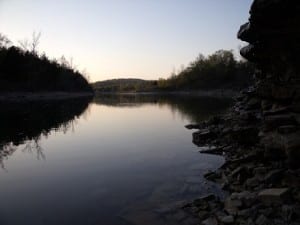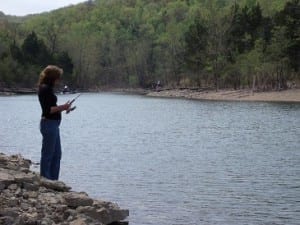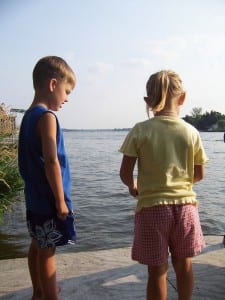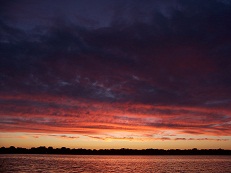8th August 2011
COFFS Coasters wondering just what happens to money raised through NSW recreational fishing fees?….. Continue reading “Fishing fee used to save habitats”
8th August 2011
COFFS Coasters wondering just what happens to money raised through NSW recreational fishing fees?….. Continue reading “Fishing fee used to save habitats”
Details about repairing Dutch Fork Lake, hold on to your hat….
History: Dutch Fork Lake a 91 acre impoundment was created in 1959. That dam had outlived its usefulness Continue reading “4.5 million in 91 acre lake improvements and fish habitat”
Details about repairing Dutch Fork Lake:
History: Dutch Fork Lake was created in 1959. That dam had outlived its usefulness when the lake was drained in 2004, Fish and Boat Commission officials said.
Cost: $4.5 million, with the money coming from a state H2O grant.
Timeline: Work to repair Dutch Fork Lake will begin next week and should be complete by May or June 2012. The lake will reopen to fishing in April 2013.

See the dozens of unique artificial fish habitat models, fish attractors and fish cover used at fishiding.com, the industry leader and only science based, man made and artificial fish habitat, proven to provide all fish with cover they prefer to prosper.
Pond Boss subscriber Shane Howell of Dallas stepped on rocks near one of five shoreline feeders surrounding his spanking-new 30-acre Oklahoma lake. He pushed the timer button, then stood back to watch the action as thousands of tiny protein-laced nuggets pelted the water’s surface. 
Hundreds of young bluegill and fathead minnows welcomed the offering, and quickly dispensed with the free meal, in a frenzy fit for starving piranha.
“We designed and stocked this lake to become a trophy bass lake,” Howell said with a smile, “and part of our management plan is to feed the baitfish.”
Feed the baitfish? What gives? Why put protein pellets in the water that the top-end gamefish may or may not eat?
Those are questions many fish pond owners ask themselves. Should you feed your pond fish? Nationwide, biologists disagree on the issue of feeding pond fish.
Proponents point out that high-protein pellets supplement the natural food supply in a fish pond and directly boost growth-rates among certain species, while indirectly improving the rates on some others. Rainbow trout, for instance, can be fed like so many barnyard chickens.
Then again, you might hear some negatives, such as: It’s a commitment. The cost is prohibitive. Feeding causes fish to congregate, altering their behavior. It’s like welfare. Pellets aren’t “natural” in a pond. Water quality is changed, forever.
So’s which side is right? Here’s how to decide the issue for yourself.
If you want to expedite growth-rates of bluegill, catfish and trout, or if you want to increase standing crops of fish in your pond, the answer is simple. Feed the fish.
For every two pounds of protein-rich, pellets (I recommend the floating variety) a group of fish consumes, those fish collectively gain a pound. The fish in your pond now weigh one more pound than before. Two pounds of feed, a pound of fish, and so on.
Let’s look a little deeper into the numbers. The best fish foods cost about 30 cents a pound. So, 60 cents of feed grows a pound of fish.
Stocked any fathead minnows lately? Priced at $10 a pound, fathead minnows can not compete with commercial pellets when it comes to feeding your pond fish.
Trying to grow huge largemouth bass? So many Pond Boss readers are.
Ol’ Bucketmouth won’t dare eat a prepared, pelleted diet. Heck, sitting atop the food chain, with a mouth big enough to swallow a cantaloupe, bass can eat anything in the pond, especially living critters. Bass snub tiny little pellets. Largemouth have bigger fish to fry, so to speak.
But what does a largemouth love to eat? Bluegill. And Mr. Bluegill loves to eat pelleted fish food.
Aha. Feed the fish that feed the bass. By so doing, you have created your own miniature food chain.
A well-managed pond, covering half a surface acre up to three acres, can grow and maintain 200-to-300 pounds of channel cat or trout along with 200-to-300 pounds of forage fish, per surface acre. That’s with an abundant supply of bluegill and other forage species. But, if you were to add high-protein fish food, the same pond can easily double that production.
Arguments arise. Is feeding a commitment? You tell me.
Much of the U.S. has at least 200 days of growing season, slightly less in the Upper Midwest and northern New England, fewer still in Canada. For the sake of creating a model feeding program for a mythical pond, let’s just say you intend to feed only three or four days, maybe five days some weeks. 
Your fish consume all of what you feed, say four pounds a day per surface acre of water. Over the course of 150 days, you feed 600 pounds of feed. Those 600 pounds of feed yield 300 pounds of fish, doubling your ponds natural production capabilities.
Do the math: Six hundred pounds of feed, at 30 cents a pound … $180. Less than $200 to put 300 pounds of weight on your fish. Cheap. I consider that a bargain.
Can you feed more? Sure, but be careful.
Two pounds of feed yields a pound of fish, but there is a balancing act to consider. For every pound you feed to the fish, there’s a pound of nutrients, some converted to energy, some processed by the fish and expelled into the water as waste. When waste dissolves in your pond, the water must process it.
Too much feed can result in too many pounds of fish, too many pounds of waste, and ultimately, problems with your water quality, if your pond water can not work with Mother Nature to clean up the extra mess. In extreme cases, I have seen overfed ponds end up with massive die-offs related to poor water quality and low levels of dissolved oxygen.
Feeding catfish? Grow Mr. Whiskers to two pounds, then catch and eat the little darling. Want bigger catfish? Stock lower numbers in the beginning. Want to name them? Stock fewer yet.
In short, do not overfeed, or plan on removing a few fish as you go along. Otherwise, your fish and your water quality will suffer.
Here’s one of my Rules of (Wet) Thumb: Never feed more than 10-to-20 pounds of floating fish food, per surface acre, per day.
Theory can get a little complicated, since young, fuel-burning fish, converting at a rate of 2-to-1, will eat 3 percent of their body weight per day during the growing season. So, keep your feeding program simple. 
To keep it simple, I recommend that in most sportfishing ponds that you feed no more than twice a day, for brief durations, once in the morning, once in the late afternoon. Feed only what the fish will clean up 10-to20 minutes. Otherwise, you’re wasting your money to watch the wind and waves carry your pellets to the other side of the pond.
Either way, keep your feeding program simple and consistent. Feed from the same place, same time, each day. As your fish grow, you may discover that where you once were feeding for production, now you are feeding to maintain. That’s when you reach decision time.
Do you feed the same amount of feed, to the same number of fish that stay the same size? Or do you reduce numbers to increase individual size?
Some biologists contend that feeding fish is akin to welfare. It creates an artificial environment. Point well taken.
Granted, when you offer pellets to a fish, it tends to leave the real world of fish-eat-fish. But it’s a balancing act. The fish you feed are not necessarily taken out of competition, but they compete less with other fish for natural prey in your pond.
In that regard, feeding pellets makes “more” natural food, to be distributed among all fish, not just a few. This increases a pond’s ability to support fish — the very point of pond management. 
Critics say a feeding station tends to congregate fish, to pull them away from their natural underwater home. Absolutely. When the dinner bell rings, fish come from as far as 100 feet away.
Bluegill and minnows surface to attack the pellets, then disappear just as quickly as they came. Hybrid stripers can put on quite a show of force when they gulp down pellets. Bass take note, too. A big bass will not be attracted to the pellets, but to the creatures partaking of the free offerings.
After all, bass won’t turn down an easy meal either. Bluegill eat fish food; bass eat bluegill eating fish food. In nature, there’s always a payback.
Too many fish can jeopardize water quality, so feed less or reduce the number (or size) of the fish. One option is adding an aerator. The tiny air bubbles bursting at the surface help Mother Nature to combine oxygen and sunlight in helping to flush or “burn” the waste products.
Rule of (Wet) Thumb: Buy good fish food. Read the bag tag, make sure the feed contains at least 28-to-32 percent digestable protein. Read the ingredients, looking for the words “fish meal.” If you don’t see those words, don’t buy the food.
For best results, use only feed intended for fish. Feed dog food to dogs, monkey food to monkeys. Your fish deserve the real meal deal.
When it comes to feeding, pond owner Shane Howell has it figured out.
“Since our goal is to grow trophy bass, and this is the first year our lake has been stocked,” he said, “we decided to grow as much baitfish as possible, to grow the biggest bass possible.”
Howell knows that it takes at least 10 pounds of baitfish for his bass to gain a pound. In his fishing hole in south-central Oklahoma, five feeders pitching out 10 pounds of feed each day will set the buffet table for his bass to grow as fast, and as large, as they can.
Howell has done the math … 10,000 pounds of feed over 200 days will produce an extra 5,000 pounds of baitfish for the 1,500 Florida bass fingerlings he recently stocked. That’s an extra 170 pounds of baitfish per acre, (above what the lake produces without feeding) that will make his bass grow to large sizes much more quickly than a “normal” lake of similar size.
The irony of Shane’s program is that when he buys $3,000 worth of feed, the largemouth will be growing rapidly, without eating so much as one pellet.
POND BOSS Magazine is the world’s leading resource for fish, pond and fisheries management information including discussions on muddy water, raising trophy fish, fish feeding, building a pond, algae control and more. Check us out at www.pondboss.com or contact Bob Lusk, the Pond Boss himself, at 903-564-5372. His books, Basic Pond Management, Raising Trophy Bass and Perfect Pond, Want One, may be purchased by calling 800-687-6075 or ordering online at www.pondboss.com
National Weather Service publishes updated precipitation-frequency atlas for California
The Times-Standard
Posted: 05/03/2011 02:00:13 AM PDT
The National Oceanic and Atmospheric Administration announced the release of a new precipitation-frequency atlas for the state on Monday.
The data is used by hydrologists, engineers and others when designing infrastructure, such as storm drainage systems, flood control structures, and water quality devices. The estimates are also needed for managing flood plains and flood-prone areas, fish habitat, stream erosion control and soil conservation and pollution control systems.
To find out more, visit www.noaa.gov.
By Brendan Trembath
Updated Wed Apr 20, 2011 5:51pm AEST
Use old oil rigs as fish nurseries, scientists say Researchers believe fish could find refuge within the rigs and be safe from the trawlers.
AUDIO: Oil rigs could have new ocean friendly role (The World Today)
Australian marine scientists are proposing leaving thousands of decommissioned oil rigs in their deep-sea spots indefinitely to become long-term fish nurseries.
The huge chunks are of steel are meant to be removed when they reach the end of their productive life, but the scientists say their approach could save the oil industry millions of dollars and protect vulnerable fish nurseries.
The Deepwater Horizon disaster a year ago showed deep sea oil exploration at its most destructive.
Eleven workers were killed and almost 5 million barrels of oil leaked into the Gulf of Mexico.
Now marine researchers at University of Technology Sydney are pondering the future of the more than 6,000 rigs still in the sea.
“There’s a huge number that are due for decommissioning – they’ve reached the end of their production life, there’s no more oil left and the question is what do we do with these structures?” Dr Peter Macreadie said.
“There’s actually not much habitat in the deep sea – not a lot of hard structured habitat, not a lot of reef and so by adding more reef the idea is that maybe you can boost production, you can boost the amount of fish.”
But it would take some major legislative changes to put the proposal into practice.
“Current legislation requires rigs to be dismantled and removed and recycled onshore if they can be recycled,” Dr Macreadie said.
“But we’re actually starting to think maybe there’s a much better use for those rigs and in some cases there actually isn’t the technology to remove these rigs.
“They’ve been in operation for 20-odd years and now we’re wondering actually, in removing them are we actually causing more problems than if we left them in place or if we moved them into the deep sea to form artificial reefs?”
Protection for species
Dr Macreadie says illegal fishing trawlers going through deep-sea areas are decimating coral reef communities and fish species.
“What’s really devastating about that is that these organisms that live in the deep sea, they’re slow growing, they reproduce very late in life and they are very vulnerable to exploitation,” he said.
“To give you an example, the orange roughy takes about 30 years until it can reach sexual maturity and breed.
“They form huge aggregations around structures in the deep sea and structures are very rare.
“When they form those aggregations fishermen have become aware of this and they can remove entire populations, generations and generations with one swoop of their net.
“So the idea is with rigs – which have a lot of hollow internal space – the fish could find refuge within those rigs and be safe from the trawl fisheries.”
Dr Macreadie says researchers do not know how long the defunct oil rigs will take to disintegrate.
“But we can say that many of these rigs have been in production for 30-odd years and they’re showing very little signs of decay, but at some point they will eventually disintegrate in the deep sea,” he said.
Dr Macreadie and his UTS colleagues have written an article published in the US journal Frontiers in Ecology and the Environment.
They hope to stimulate a rational debate about the future of the world’s rigs.
Dr Macreadie says he does not work for, consult, or own shares in any company or organisation that would benefit from the proposal.
Humans are stopping proper functioning of reefs
April 2011: In an unprecedented collaborative analysis, scientists from 49 nations demonstrated that the ability of reef fish systems to produce goods and services to humanity increases rapidly with the number of species.
| COMPLEX: But coral reef systems function best when there is more biodiversity |
However, growing human populations hamper the ability of reefs to function normally, with the most diverse reef fish systems suffer the greatest impairments from stressors triggered by human populations.
‘Coral reefs provide a range of critical goods and services to humanity – everything from nutrient cycling to food production to coast protection to economic revenues through tourism,’ says Camilo Mora at Dalhousie University in Canada and lead researcher of the study. ‘Yet the complex nature and large-scale distribution of coral reefs is challenging scientists to understand if this natural ecosystem will continue working to deliver goods and services given the ongoing loss of biodiversity in coral reefs.
Study involved 2,000 coral reefs worldwide
‘Numerous experiments have shown that biodiversity has positive effects on several ecosystem processes, although the number of species required to ensure the functionality of a given process is fairly low, as many species often have similar ecological roles,’ says Michel Loreau from Canada’s McGill University, a co-author of the study. ‘What remained largely unknown, however, was whether the results of experimental studies reflect what happens in real ecosystems.’
To fill this unknown, 55 researchers, in a two-year study, collected the necessary data to determine whether biodiversity influences the efficiency of reef fish systems to produce biomass, and if so, work out the role of humans in such a linkage.
The team collected demographic data on human populations as well as environmental and biological data on the identity of species, their abundances and body sizes in almost 2,000 coral reef locations worldwide. The data on abundance and body size were used to calculate the cumulative weight of all fishes on each reef (also called standing biomass), which is one of the main services reef fishes provide to humanity through food supply but also a very close proxy for how effectively ecosystems produce biomass.
‘The more biodiversity the better’
‘The results of the study were stunning,’ says Kevin Gaston at Sheffield University. ‘While experimental studies have elucidated that the biomass production of ecosystems stabilises after a certain number of species is reached, this field study demonstrated that the production of biomass in reef fish systems did not saturate with the addition of new species.’
‘This study shows, quite simply, that the more biodiversity, the better,’ says Marah Hardt with OceanInk. ‘The benefits appear limitless, if we allow ecosystems to operate at their full potential.’
Michel Kulbicki of the French Institute for Research and Development said: ‘This strong relationship clearly indicates that species interact in such a way that their combined effect is larger than the addition of their individual parts and that the loss of species can have far-reaching consequences in the functioning of coral reefs.’
The study also demonstrated that standing biomass reduced with increasing human density, although for the same number of people the reduction of biomass was significantly larger in more diverse ecosystems.
‘Curbing human population growth is at the core of finding ultimate solutions for the protection of biodiversity’
‘It’s been usual to expect that diverse ecosystems could lose a few species without it mattering very much because the high redundancy of species should allow the replacement of any species that is lost,’ said Peter F. Sale, assistant director of the Institute for Water, Environment and Health of the United Nations University, who was not involved in the study.
‘The results of this study now suggest that we do not have such insurance and that reef ecosystems are at greater risk from human pressures than we previously thought.’
The negative impact of humanity on reef fish systems can be widespread, as some 75 per cent of the world’s coral reefs are near human settlements and could worsen, as 82 per cent of countries with coral reefs are expected to double their human populations within the next 50 to 100 years.
‘Unfortunately, we find again and again that our global population cannot be sustainably supported without the deterioration of the world’s natural resources and the resulting backlash on human welfare,’ says Mora. ‘Thus, identifying socially and politically acceptable solutions to curb human population growth is at the core of finding ultimate solutions for the protection of biodiversity and the prevention of unnecessary hardship.’
‘This is a critical situation,’ says coauthor Sebastian Ferse from the Leibniz Center of Tropical Marine Ecology. ‘It underlines once again that current management approaches are insufficient to protect marine biodiversity on a large scale, and that holistic approaches combining natural and social systems are needed.’
However it was not all doom and gloom. The study reported that at least 25 per cent of the world’s reefs remain distant from direct human effects. Those reefs are located on small and isolated areas where human habitation is sparse. ‘These few reefs are in stark contrast with degraded sites, and may still be able to act as sources to replenish others. This is a fortunate situation that can buy us some time while we figure out effective solutions to this coral reef crisis.’
artificial fish habitat at fishiding.com